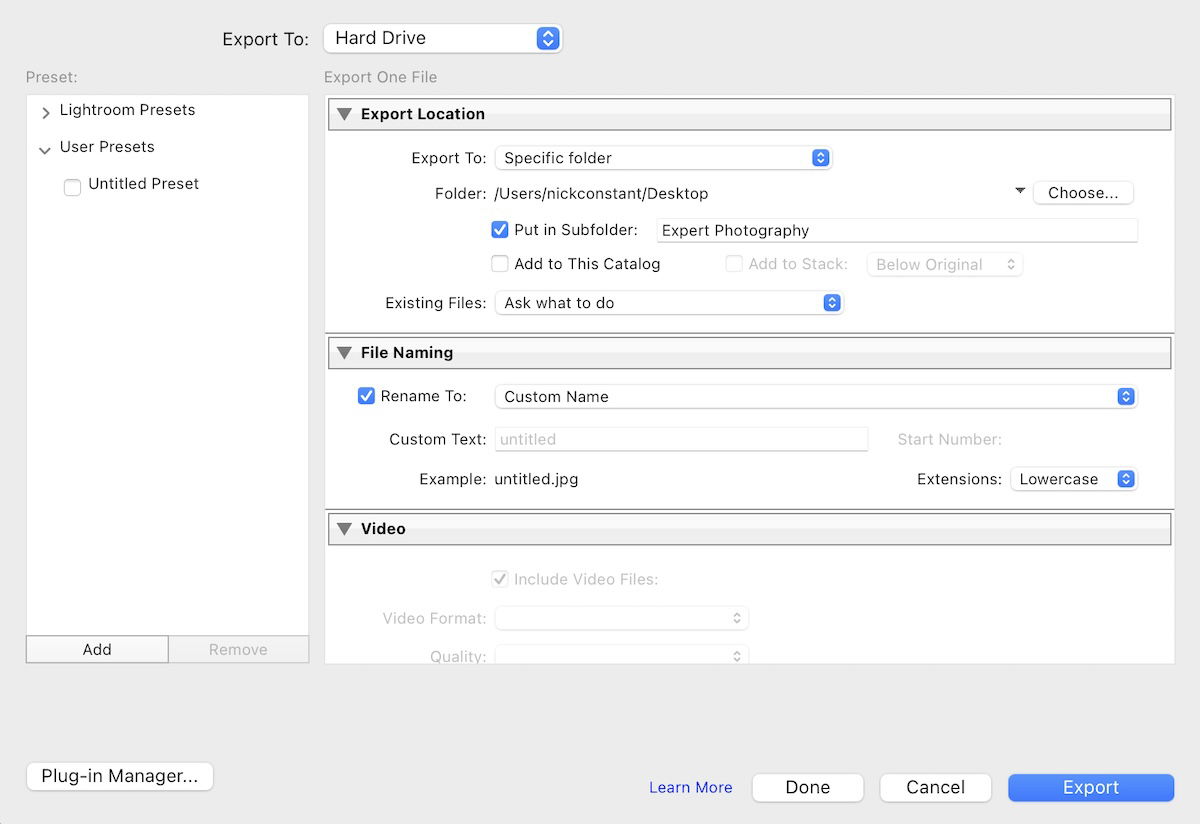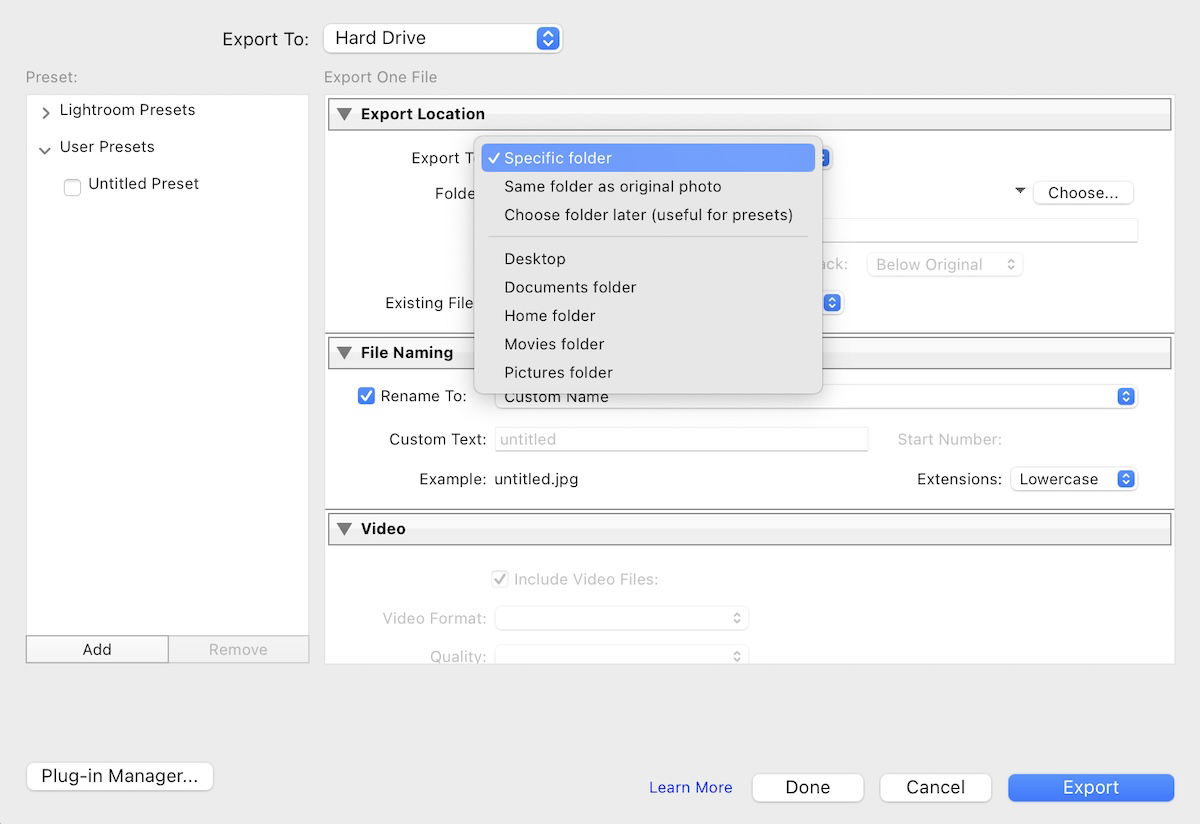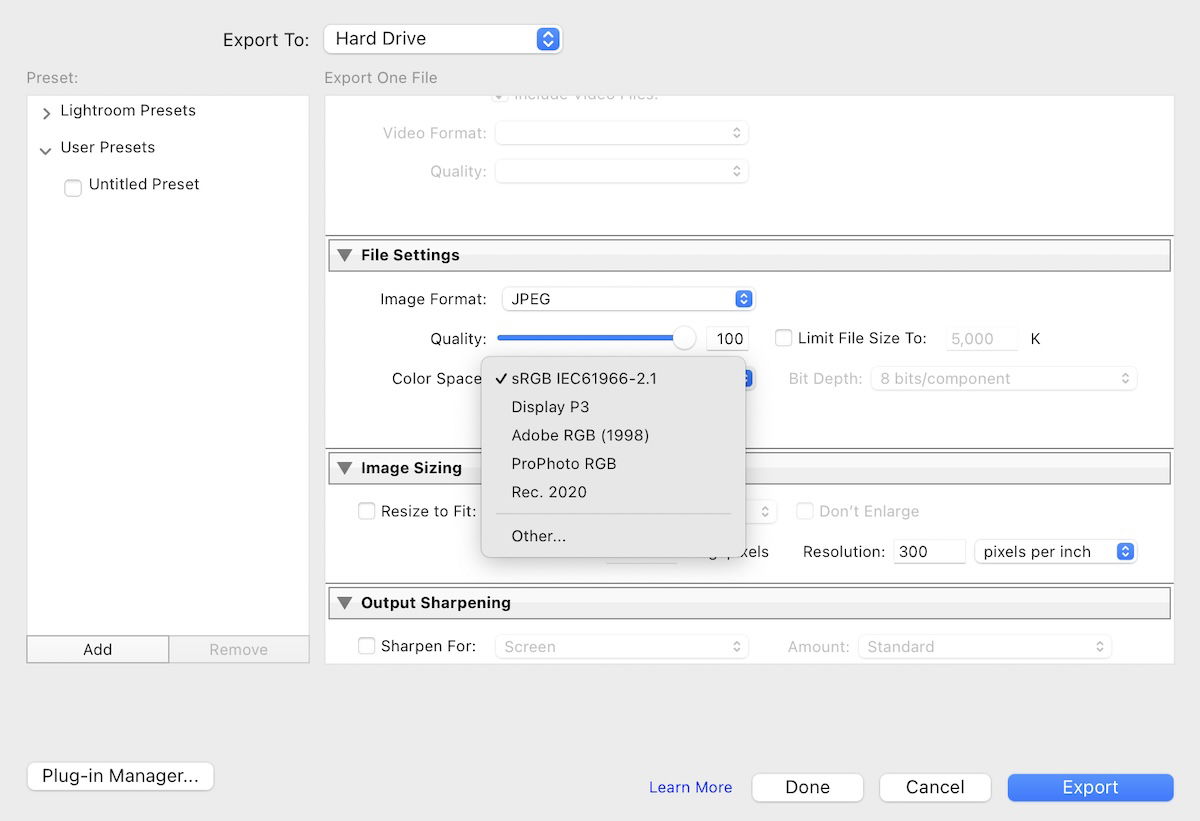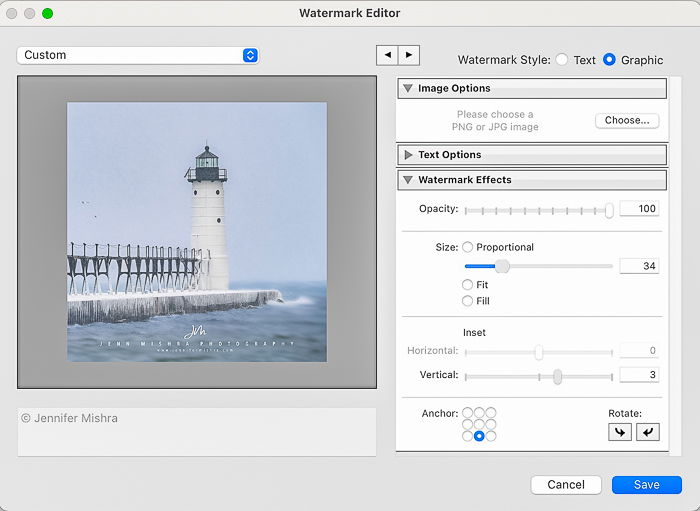Best Lightroom Export Settings (For Print, Instagram & More)
Toady, we will explore the best Lightroom export settings. These settings balance image quality with accessibility. Maybe you’re editing photos for Instagram or enlarging photos for printing. Here, you’ll find the perfect way to share your best work.
Let’s dive deep into the many settings in the Lightroom export dialogue box (File > Export). Many options are also in the export panel of Lightroom (formerly Lightroom CC), but not all. To learn how to export photos from Lightroom, see our post on how to save and export photos from Lightroom.

Choosing The Best Lightroom Export Settings
We love our images and want to share our favorites at the highest quality possible. But this does not always mean exporting the files at 100%. Exporting images from Adobe Lightroom is not a one-size-fits-all situation.
We share our photos in different ways. So, the best Lightroom export settings depend on where we share our images. But we’ll cover how to best export photos from Lightroom without losing quality.
 © Mylene Tremoyet
© Mylene Tremoyet
File Managment
Choose Export Location
Click File > Export from the main menu at the top. Then, use the settings under the Export Location tab to help you organize exports. There is no best export location. Choose the location that works for you.
Select same folder as original photo in the Export To drop-down menu to keep your exports with the original photos. But you can also save them to your desktop in a new folder. Choose where you want to keep your images.
In the Existing Files drop-down, select choose a new name or the exported file. By default, Lightroom Classic exports using the file name encoded by your camera.
You can customize the file names in almost infinite ways. Then, you can save your favorite naming combinations for your exports.



Change File Name
Start by opening the File Naming tab and click the box next to Rename File. You can type directly into the template editor.
Add custom text to your image title or punctuation to separate title elements. Lightroom shows you an example of what the title looks like for your selected image.
For more in depth control, open the drop-down menu and select Edit. This opens the Filename Template editor.
Lightroom Classic includes default naming choices like Filename, Sequence #, Date, and Title. Scroll through the drop-down menus to see more choices.
Use other options like Image # and metadata naming options like Copyright. Include as many identifiers as you like. Then click the Insert button next to your choices.



File Format
Adjust Details Under File Settings
The File Settings tab lets you choose the image format and quality, file size, and color space. Lightroom has similar settings. But the export panel is organized differently from Lightroom Classic.
This space allows you a great amount of control. You have a quality slider which is great for roughly editing the output quality of your photograph.
For more accurate control, use the Limit File Size To: box to set the highest limit for your file size.



Best Formats to Export Photos
The best image format for online posting is JPEG. It is a universal image file format. But a JPEG is a compressed file. So you lose some quality when exporting. It just may not be obvious when viewing a photo online.
If you want to export a high-resolution image, select TIFF or DNG. For printing, you can choose either a JPEG or a TIFF file. But not all social media platforms accept uncompressed file formats. Some platforms accept RAW files. But this is not common.
Here are the image file formats currently accepted by the most popular social media platforms:
Instagram: Converts all uploaded photos to JPEG. Facebook: Accepts JPEG, PNG, TIFF, GIF, and BMP. X: Accepts JPEG, PNG, and GIF. Flickr: Accepts JPEG, PNG, and non-animated GIFs. All other formats are converted to JPEG. Pinterest: Accepts JPEG, PNG, TIFF, BMP, and WEBP. Website Hosts: Web hosting sites vary. For example, Wix accepts JPEG, PNG, TIFF, GIF, BMP, WEBP, HEIC, HEIF, JPE, JFIF, JPEG 2000, and RAW files.Best Image Quality and Sizes for Export
Cameras with lots of megapixels (MP) create large files. And if you do any editing in Adobe Photoshop beforehand, your file size can skyrocket past a gigabyte (GB).
We want to export photos from Lightroom without losing quality. But exporting full-sized files usually means large file sizes.
When exporting for print, export a full-sized file unless the print lab has an image size limitation. But large image files do not work well online.
Large image files are slow to load and use lots of photo storage space. Also, there is a limit to how much quality can be displayed on most monitors and mobile devices.
Popular platforms compress your images because of the large volume uploaded. If you export images at their recommended size, you will see little difference in image quality.
If you upload a full-size image and leave the compression up to the platform, you will probably see reduced image quality.
High-quality images can become pixelated, and the platform may crop your photo. Plus, reducing the size also protects your full-size image from unofficial downloads.
Reducing File Size
In Lightroom, you can reduce file size in two ways. You can use the slider to reduce JPEG quality by a percentage or set a size limit.
Rather than export the files at 100%, select 85%. This reduces the file size and keeps the perceived image quality. Some photographers even suggest reducing image quality to 70%.
If the social media platform has a file size limitation, check the box next to Limit File Size To: Then, enter a maximum file size.
Lightroom creates the best quality file within the size limit. Here are the current image size limitations of popular social media platforms:
Instagram: Max 8 MB Facebook: Under 30 MB is recommended X: Under 5 MB is recommended Flickr: Up to 200 MB Pinterest: Max 20 MB Website Hosts: This varies. For instance, Wix recommends no larger than 25 MB.You may also want to reduce file size to make images load faster. But there is disagreement about the optimal image size for online viewing.
If the images load slowly, reduce the size to under 1 MB (1,000 KB). If the photos still load slowly, reduce the size to 500 KB.
Best Color Space Settings for Export
Most online content is viewed on computer screens or mobile devices. Both have limited colors. So, you may prefer to edit in a larger color space like Adobe RGB.
But the best color space for posting online is sRGB. This limits the colors to those your viewers can see. It is also the default color space for many cameras.
If you print photos, the color space can be sRGB or Adobe RGB.

Image Size
Adjust Image Sizing
The size of your images will vary with your camera system and how you have cropped them. But most digital cameras create images larger than accepted on social media platforms.
Under Image Sizing, you can export files at defined display sizes and resolutions. You have similar choices in Lightroom, but they are more limited.


Best Display Size for Export
If you are printing, export your file with the original display size. Check the box next to Resize To Fit if you are posting online.
You can choose to enter the exact dimensions for both width and height. Or you can enter dimensions for your image’s long or short edge. Lightroom then figures out the other dimension based on the current aspect ratio.
There is an optimal display size for many social media platforms. Platforms reduce your image to the maximum size. Some keep the aspect ratio. But others may crop your photo.
Platforms have different recommendations for cover photos, banners, and ads. But here are the display size recommendations for image posts:
Instagram: 1,080px on the bottom edge. Photos in landscape orientation are 1,080 x 608px. Photos in portrait orientation are 1,080 x 1,350px (4:5 aspect ratio) Facebook: 1,200px on the bottom edge. Pictures in portrait orientation work well as 1,200 x 1,500px (4:5 aspect ratio). X: Images posts are best at 1,200 x 675px (16:9 panoramas). Flickr Pro: Images display at 6,144px on the long edge. Other accounts display at 2,048px. Pinterest: Images display at 1,000px on the short side. Photos in landscape orientation are 1,000 x 1,500px. Photos in portrait orientation are 1,000 x 2,100px. Website Hosts: This varies. Wix suggests uploading images that are 2,560 x 1,440px.There is debate about the best resolution for posting images to a personal website. It is about balancing quality and how fast you want the webpage to load.
Most web hosting services let you load whatever file size you want. But the platform may compress or “optimize” your image to increase speed. If you are unsure what display size to use for your website, 2,048px is an excellent place to start
The ‘Don’t Enlarge’ Box and Best Export Resolution
If you are working with a small image file, you may be tempted to enlarge the photo on export. Lightroom is not a good tool for enlarging photos. Check the box next to Don’t Enlarge.
If you need to enlarge a photo for printing, use Lightroom, Photoshop, or a resize tool. You can use ON1 Photo RAW’s AI resize. Or use Photoshop’s Superzoom neural filter to enlarge part of a photo without losing resolution.
The best resolution for images viewed online is 72 ppi. For the best printing resolution, change the resolution to 300 ppi.
Final Touches
Sharpening
Sharpening defines the edges and usually adds a bit of brightness to your image. Most images benefit from a bit of sharpening during export. Depending on your needs, you can choose from a set of output sharpening presets.
Both Lightroom Classic and Lightroom include sharpening presets for onscreen and printing on matte or glossy paper. You can choose from three sharpness levels—Low, Standard, and High.

Adjust Metadata Settings
Your camera collects lots of data, including settings and maybe GPS coordinates. Lightroom makes adding more metadata to your images easy to help you find and sort images.
You can add a model’s name and your address. And you may want this personal information attached to the image. But you may not like the world to see it.
Because this information lives with an image, it becomes public when you post to many social media platforms. The exception is Instagram, which strips your picture of all metadata.
Other platforms may strip some of the metadata. But Flickr preserves metadata. So, under the Metadata tab, you control which metadata Lightroom Classic embeds when you export images.
You can include all metadata, camera settings, or only copyright information. You can also remove information about the location and people in your photo.

Add a Watermark
Adding a watermark is like signing a painting. There is much debate about whether to watermark images or not. One side argues that a watermark detracts from the image. Others argue it is like signing artwork and reduces image theft.
You can add a watermark at export rather than onto the image itself. This lets you change when and where you add a watermark. Most photographers do not watermark printed images. But you may add it when posting to social media.
You can add simple text or a graphic watermark. Click the box next to Watermark. Open the drop-down menu in Lightroom Classic and select Edit Watermarks.
 Lightroom Classic watermark panel
Lightroom Classic watermark panel
Setup Export Preset Settings
It is easy to forget which export settings are best for various social media platforms and printing. So, make an export preset of your favorite settings! Click the Add button below the left-hand column in Lightroom’s export dialogue.


Here are some examples of what you can enter:
Lightroom Export Settings for Instagram
Location: Personal choice File Naming: “Filename_Instagram” File Settings: JPEG, sRGB, 85% Image Sizing: Width 1,080px, resolution 72 ppi Sharpening: Screen, standard Metadata: Leave the default setting Watermarking: Personal choiceLightroom Export Settings for a Website
Location: Personal choice File Naming: “Filename_Website” File Settings: JPEG, sRGB, 85% Image Sizing: Width 2,048px, resolution 72 ppi Sharpening: Screen, standard Metadata: Include all metadata, then check the Remove Person Info and Remove Location Info boxes Watermarking: Personal choiceLightroom Export Settings for a High-Resolution Print
Location: Personal choice File Naming: “Filename_Print” File Settings: TIFF, sRGB, 100% Image Sizing: Uncheck resize box, resolution 300 ppi Sharpening: Matte or glossy, standard Metadata: Leave the default setting Watermarking: Uncheck the boxConclusion: The Best Lightroom Export Settings
The best Adobe Lightroom export settings depend on how you want to use the exported file. File and display sizes vary across social media platforms.
What you use for social media posts will not be the same for Lightroom export settings for print. So you should determine them on a case-by-case basis.
For more tips and tricks, look at our complete Lightroom guide! And try out The Preset Collection for shortcuts to perfection!
By accepting you will be accessing a service provided by a third-party external to https://kendallcameraclub.org/